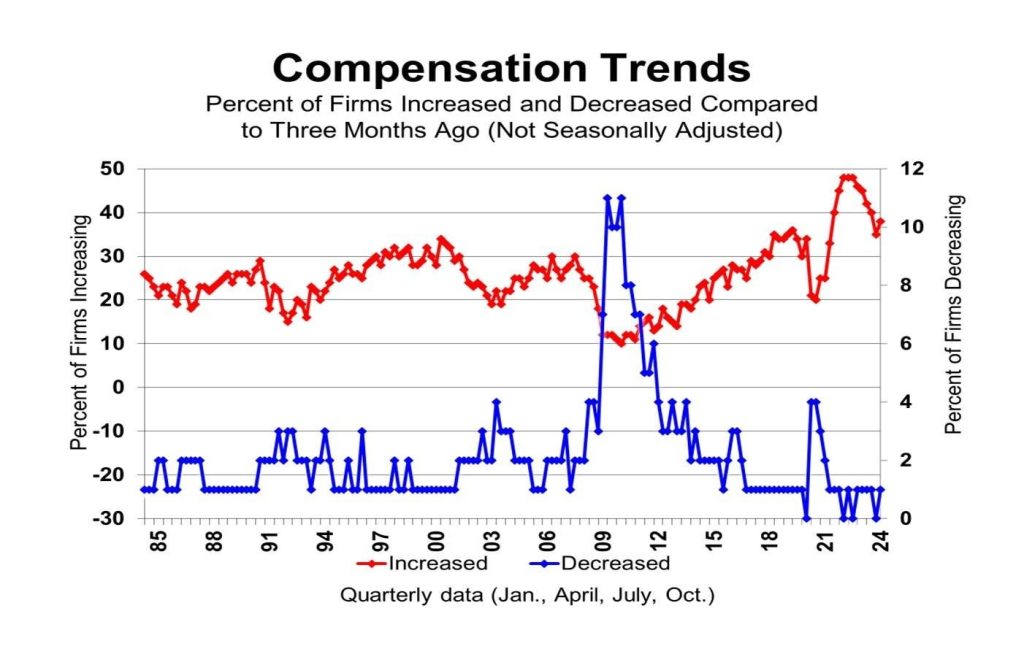According to the Consumer Price Index, the cost of the basket of goods that consumers typically buy has risen by about 20% since 2020. To counteract this inflation, compensation must also rise by at least that amount. However, the government reports that real compensation has only increased by -2%, indicating that prices are rising faster than incomes. This is especially challenging for consumers in the bottom half of the income distribution, who are feeling the impact of rising prices even more acutely.
Small business owners have been increasing compensation levels aggressively not out of generosity, but due to the competitive pressure to retain and attract workers. Labor costs represent a significant portion of small firms’ expenses, making it essential to adjust compensation levels to stay competitive. While compensation reductions are rare, most firms are reporting increases, with record-high levels of 51% of firms reporting increases in 2022 and 39% continuing to do so. As a result, many firms are raising their selling prices to cover these additional costs, which is contributing to the persistence of inflation.
During recessions, there is a clear decrease in compensation increases, as seen in the 2008-2009 recession and the Covid shutdown. The gap between planned compensation increases and actual increases widens as the economy expands, suggesting that later in the economic cycle, raises are driven more by market pressures than strategic planning. Despite a slight decline in the percentage of firms raising compensation recently, levels remain elevated compared to pre-2020, indicating continued pressure on firms to raise prices and thus contributing to ongoing inflation.
The Federal Reserve’s efforts to reduce inflation are being hampered by the persistently high levels of firms increasing compensation and subsequently raising prices. The frequency of wage increases, although slightly diminished, remains historically high, keeping pressure on labor costs and leading to higher selling prices for consumers. Unless there is a significant economic downturn, it is unlikely that inflation will decrease significantly in the near future. Labor cost pressures are expected to remain, making inflation a persistent challenge for the time being.
In conclusion, the current economic climate is marked by rising inflation, driven in part by the need for firms to increase compensation levels in response to competitive pressures. While efforts to reduce inflation are hindered by the high rates of firms raising prices, prospects for a quick return to target inflation levels are slim. As long as labor cost pressures persist, inflation is likely to remain stubbornly high, posing challenges for consumers and policymakers alike.













